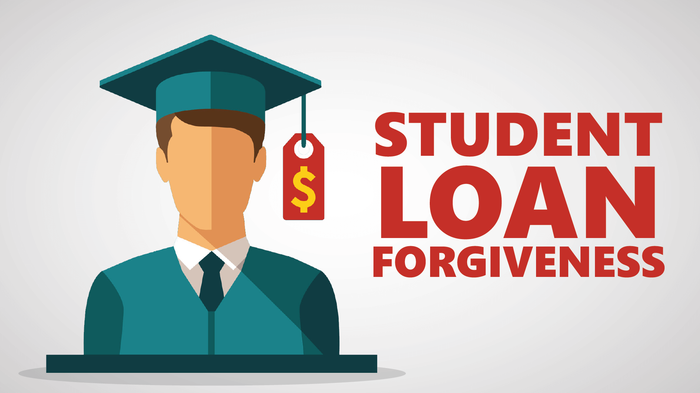Student Loan Forgiveness
On August 24, 2022, President Biden announced that the U.S. Department of Education will forgive federal student loans.
President Biden’s campaign promise to cancel student debt is coming to fruition later this year. This article provides a guide to the details of the President’s plan, including:
- The amount of forgiveness
- What type of loans qualify?
- Who’s eligible?
- Timeline for the plan
- Tax implications
- New income-drive repayment plan
- Long-term impact
The amount of forgiveness
The student loan forgiveness plan provides either $10,000 or $20,000 in student loan forgiveness. Borrowers who received a Federal Pell Grant will receive up to $20,000 in federal student loan forgiveness. Other borrowers will receive up to $10,000 in federal student loan forgiveness.
The amount of forgiveness is capped at the amount of student loan debt (i.e. if your loan balance is $7,000, this is your maximum).
Borrowers who made payments during the pandemic may request a refund of those payments by contacting their loan provider. This request is valid for payments made since March 2020, and refunds may take 60 days to process.
What type of loans qualify?
Eligible loans include all federal loan types issued through or on behalf of the U.S. Department of Education. This is the same eligibility requirement for loans that were on pause during the pandemic.
Private student loans are not eligible through the forgiveness program. Also, commercial FFELP loans and Federal Perkins Loans held by a college do not qualify. However, it may be possible to qualify for eligibility if these loans are included in a federal Direct Consolidation Loan.
Who’s eligible?
Borrowers who were undergraduate, graduate, or professional school students, as well as parents of dependent undergraduate students, are eligible for the forgiveness program.
The borrower’s income during 2020 and 2021 will determine eligibility. The most likely metric to measure income will be Adjusted Gross Income.
The borrower’s income during 2020 or 2021 must be less than $125,000 if single and less than $250,000 for married couples or heads of household.
Current students are also eligible. If current students are dependent undergraduate students, their parent’s income will determine eligibility. If the student is independent (i.e. files their own tax return), their eligibility will be based on the student’s income.
Timeline for the plan
Forgiveness will be automatic if the U.S. Department of Education already has the borrower’s income information. If you submitted the Free Application for Federal Student Aid (FAFSA) or you are participating in an income-driven repayment plan, your information should be on file. Other borrowers can complete a simple application form, which will be available beginning in October 2022.
Forgiveness will occur within 4-6 weeks of the application, if not automatically forgiven. If you would like to receive forgiveness before restarting your repayment plan, the U.S. Department of Education advises submitting your application before November 15, 2022.
Tax implications
Loan forgiveness will not be considered taxable income on the borrower’s federal income tax return. However, the amount of loan forgiveness may be taxable on your state tax return.
Currently, there are nine states with no state income tax and these are the only confirmed states that will not tax student loan forgiveness. If you live in one of the other forty-one states, you’ll want to stay tuned for guidance later this year.
New income-driven repayment plan
For loan balances not included in the forgiveness program, the President also announced a new income-driven repayment plan. This plan reduces the percentage of discretionary income used to calculate monthly payments.
For undergraduate loans, payments will be based on 5% of discretionary income. For graduate and professional loans, payments will be based on 10% of discretionary income.
For borrowers with both types of loans, a weighted average of the loan types will be calculated.
The remaining debt will be forgiven eventually, depending on the size of the loan. Original loan balances under $12,000 will be forgiven after 10 years of repayment under the new plan, and 20 years otherwise.
The new repayment plan will become available on July 1, 2023.
Long-term impact
About 30% of borrowers will have their federal student loan debt completely erased. According to to the U.S. Department of Education, low- and middle-income borrowers will benefit most.
The total cost of the President’s plan exceeds $350 billion, if all eligible borrowers apply. While this is quite the burden to the U.S. taxpayer, the percent of total GDP is minimal, so this program should not have a long-term impact on inflation. Nor, will this forgiveness amount provide any meaningful stimulative impact on the economy.
Also, student loans will not be eligible for forgiveness if they are taken out after June 30, 2022. This means future college students will still face higher education costs and will need to find a way to pay for college in an increasing cost environment.
What should you do?
If you are a student loan borrower consider the following action steps:
- Update your contact information with your student loan servicer and on StudentAid.gov to ensure you receive important updates
- Consider consolidating FFELP loans via a Federal Direct Consolidation Loan immediately to qualify for forgiveness. Consolidation loans are available through StudentAid.gov
- Look for a student loan forgiveness application in early October 2022.
If you have any questions please reach out to our team at (585)340-6538 or info@okeefestevens.com.
Disclaimer
This document is for informational purposes only. O’Keefe Stevens Advisory does not make any warranty, expressed or implied, or assume responsibility for the accuracy, completeness, or usefulness of any information, tools, resources or process described in this material, or represent that its use would protect against cybersecurity incidents. O’Keefe Stevens Advisory is not liable for any damages or harm that may occur as a result of the use of any information, tools, resources or processes described here.



No responses yet